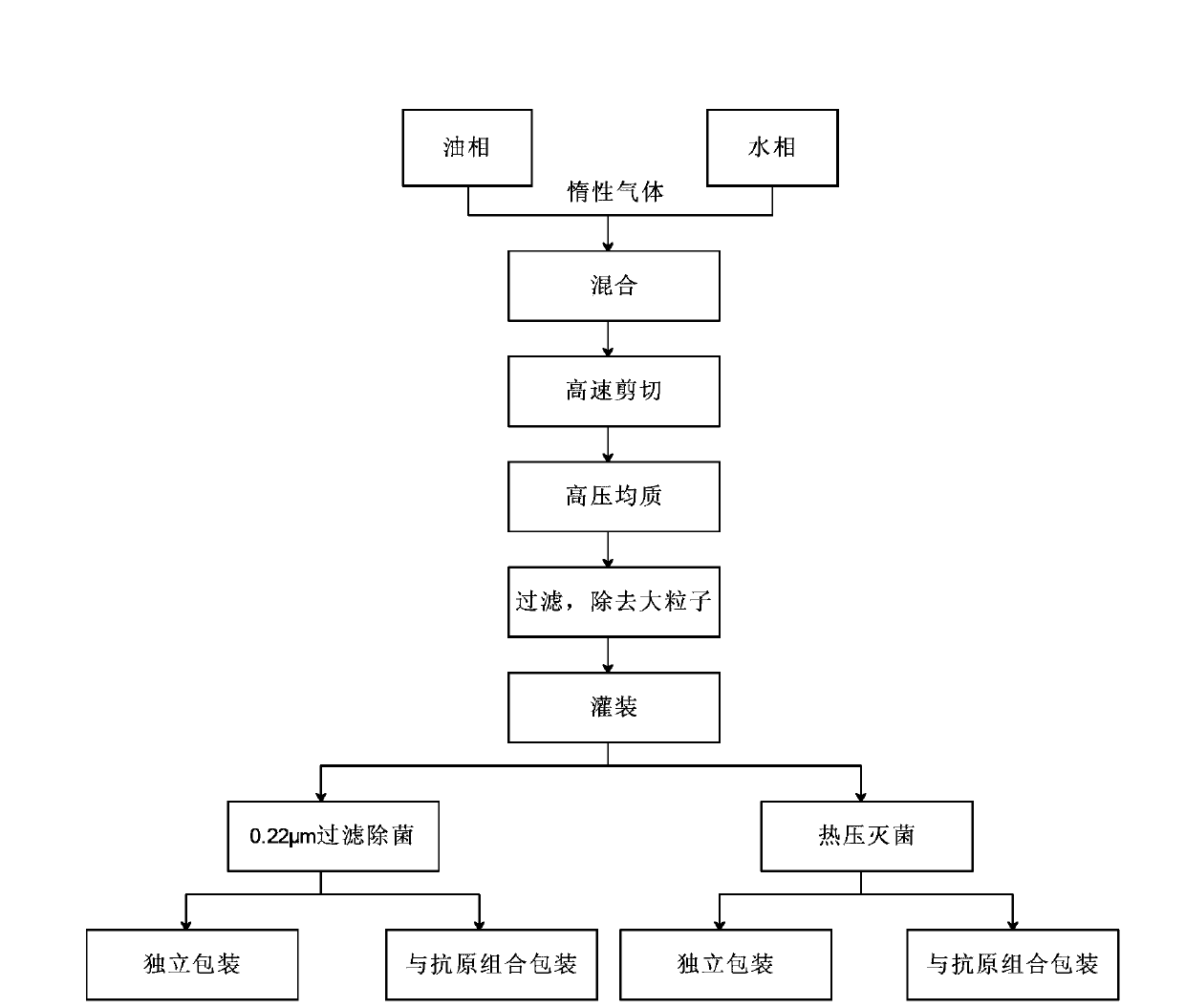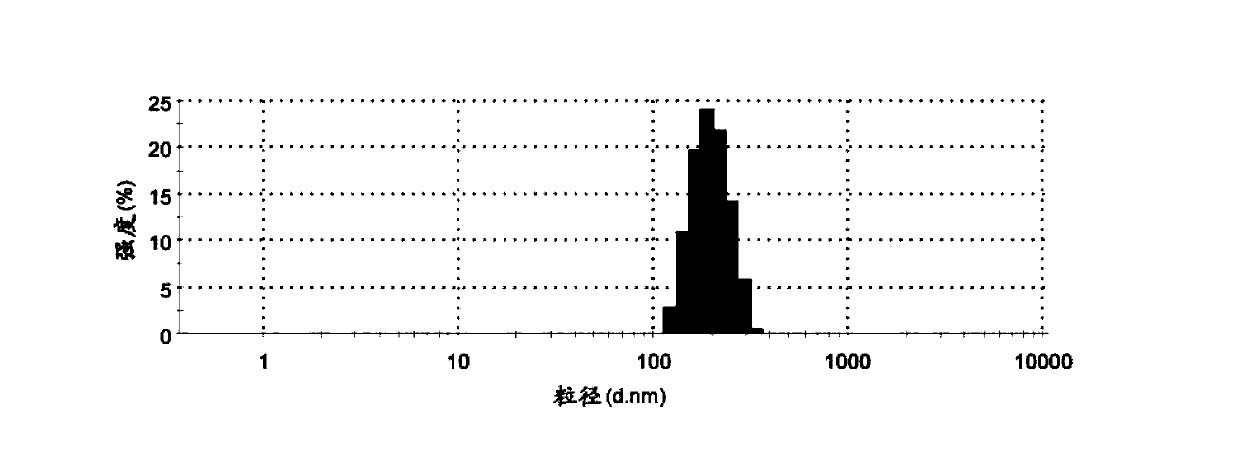Oil-in-water submicron emulsion serving as vaccine adjuvant and preparation method thereof
An oil-in-water vaccine adjuvant technology, which is applied to medical preparations with non-active ingredients, medical preparations containing active ingredients, and pharmaceutical formulas, can solve the problems of antigen titer reduction and inactivation, and achieve stability sex good effect
- Summary
- Abstract
- Description
- Claims
- Application Information
AI Technical Summary
Problems solved by technology
Method used
Image
Examples
Embodiment 1
[0050] Embodiment 1: the preparation of oil-in-water type submicroemulsion
[0051] Under an inert gas environment, 50 g of squalene and 6.0 g of egg yolk lecithin (containing 80% phosphatidylcholine) were weighed, stirred and mixed evenly, as the oil phase.
[0052] Weigh 0.3 g of sodium oleate and 25 g of glycerin, add an appropriate amount of water for injection, stir and mix evenly, and use it as the water phase.
[0053] In an inert gas environment, the oil phase and the water phase are mixed, and the high-speed shear is continued to form colostrum. Add about 0.1ml of 1mol / L NaOH to adjust the pH value of colostrum to 5.0-10.0, and dilute to 1000ml with water for injection. Transfer to a high-pressure homogenizer for homogenization until the emulsion droplet size is reduced to a qualified level, after filtering, filling, autoclaving, and cooling to obtain the submicroemulsion vaccine adjuvant.
Embodiment 2
[0054] Embodiment 2: the preparation of oil-in-water type submicroemulsion
[0055] Under an inert gas environment, 50 g of squalene and 6.0 g of egg yolk lecithin (containing 80% phosphatidylcholine) were weighed, stirred and mixed evenly, as the oil phase.
[0056] Weigh 25g of glycerin, add an appropriate amount of water for injection, stir and mix evenly, and use it as the water phase.
[0057] In an inert gas environment, the oil phase and the water phase are mixed, and the high-speed shear is continued to form colostrum. Add about 0.1ml of 1mol / L NaOH to adjust the pH value of colostrum to 5.0-10.0, and dilute to 1000ml with water for injection. Transfer to a high-pressure homogenizer for homogenization until the emulsion droplet size is reduced to a qualified level, after filtering, filling, autoclaving, and cooling to obtain the submicroemulsion vaccine adjuvant.
Embodiment 3
[0058] Embodiment 3: the preparation of oil-in-water type submicroemulsion
[0059] Under an inert gas environment, 10 g of squalene and 0.5 g of egg yolk lecithin (containing 80% phosphatidylcholine) were weighed, stirred and mixed evenly, and used as the oil phase.
[0060] Weigh 20 g of glycerin, add an appropriate amount of water for injection, stir and mix evenly, and use it as the water phase.
[0061] In an inert gas environment, the oil phase and the water phase are mixed, and the high-speed shear is continued to form colostrum. Add an appropriate amount of 1mol / L KOH to adjust the pH value of the colostrum to 5.0-10.0, and dilute to 1000ml with water for injection. Transfer to a high-pressure homogenizer for homogenization until the emulsion droplet size is reduced to a qualified level, after filtering, filling, autoclaving, and cooling to obtain the submicroemulsion vaccine adjuvant.
PUM
| Property | Measurement | Unit |
|---|---|---|
| Particle size | aaaaa | aaaaa |
| The average particle size | aaaaa | aaaaa |
| The average particle size | aaaaa | aaaaa |
Abstract
Description
Claims
Application Information
 Login to View More
Login to View More - R&D
- Intellectual Property
- Life Sciences
- Materials
- Tech Scout
- Unparalleled Data Quality
- Higher Quality Content
- 60% Fewer Hallucinations
Browse by: Latest US Patents, China's latest patents, Technical Efficacy Thesaurus, Application Domain, Technology Topic, Popular Technical Reports.
© 2025 PatSnap. All rights reserved.Legal|Privacy policy|Modern Slavery Act Transparency Statement|Sitemap|About US| Contact US: help@patsnap.com



